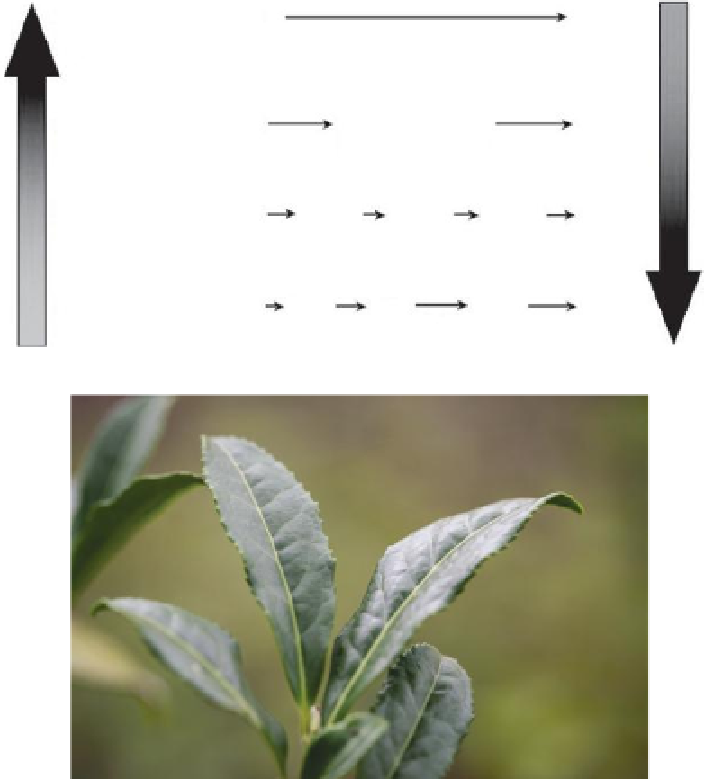Chemistry Reference
In-Depth Information
Catechins
eaflavins and
earubigins
White Tea
(buds or
young leaves)
Steamed
(oxidase inactivation)
Dried
Withered
Steamed or panfired
(oxidase inactivation)
Dried
Green Tea
(mature leaves)
Oolong Tea
Withered
Bruised artially
Fermented
Panfired
Dried
(mature leaves)
Black Tea
(mature leaves)
Withered
Rolled
Fully
Fermented
Dried
Fired
FIGURE 13.8
Processing of tea determines the type of tea and the characteristic flavonoid
content. (Photograph courtesy of Steven Foster.)
leaves are placed on trays and left in a cool, damp place for 1 to 3 hours and
the leaves turn from green to a copper color.
Drying
—After the rolled leaves are oxidized (in the case of black tea), they are
dried with hot air to quickly stop the oxidative process or to prevent mold.
13.9.2 t
ea
C
ateChinS
The tea contains beneficial antioxidants, but high-quality green and white teas pos-
sess greater concentrations than black tea. Today, scientists believe that catechins are
the main active ingredients of green tea. The catechins include the polyphenolic com-
pounds known as epicatechin (EC), epicatechin-3-gallate (ECG), epigallocatechin
(EGC), and epigallocatechin-3-gallate (EGCG), all of which may be responsible for
the anticarcinogenic and antimutagenic activities of green tea (Figure 13.9). Other

Search WWH ::

Custom Search